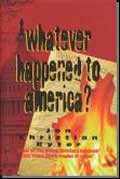SMART
GROWTH CENTRALIZING WEALTH IN THE NEW EARTH AGE
PART 1 of 2
By Niki Raapana
December 28, 2011
NewsWithViews.com
"Hippodamus, son of Euryphon, a native of Miletus, invented the art of planning and laid out the street plan of Piraeus." Aristotle, Greek philosopher and educator (384-322 BC)
The very idea that land management is a proper function of government did not arise naturally in the nation founded on property rights. For the first one hundred years of U.S. independence, towns and cities growing up around American industry and agriculture developed somewhat organically, and usually under local control.
The original American system declared independence from the imperial British colonial governance model it was born into. Local rule was established and protected under U.S. national and state constitutions well into the 19th century. Protecting the rights of common born individuals to self governance over their private property was the legitimate purpose for government in the United States.
In spite of all the conflicts within the national banking and tariff system, over the first unrestrained century, America built up an equilibrium between industry and agriculture that empowered millions of common born people. It was the first time in world history that granting titles of nobility and an established state chuch were forbidden by law. All the power formerly held by the governing aristocracy was transferred to the American people, who claimed it as their natural birthright. Even after the devastating Civil War and the invasion of the west by the monopoly capitalists, Americans who claimed their natural born freedom and independence proved to be a formidable barrier to imperialist plans for global governance.
Of course not everyone on the continent prospered. Conquered American Native tribes were forced to live under strict federal controls, and the proof of which system was a "best practice" rests on the physical evidence. There is simply no comparrison between life on a federal Indian reservation compared to anywhere immigrant Europeans and freed slaves were free to pursue happiness.
It was in the beginning of the 20th century that the idea of federal control over all local land and development was first introduced into the American conciousness.
Comprehensive
planning is based in the idea that one central principle is the best
way to govern vast areas. What defines the modern communitarian sustainability
principle is it is not merely a
communist/socialist program, nor is it entirely a project divined by
finance capital. It's the perfect Middle Solution between the two.
In the United States, comprehensive planning for cities and rural areas began as a partnership between Capitalists and Fabian Socialists. To comprehend it as a fully evolved, functional regulatory system of governance is to see how smart it really is.
19th century slum conditions and crowded neighborhoods in the big industrialized cities were the first justification for taking control over all local planning in the country. When people migrated to outer areas, the justification changed to overcrowded subways. The "blight" of American cities continues to be used as the moral imperative for expanded government control over all economic development.
In 1909, Henry Morgenthou Sr., a New York capitalist with expertise in Middle Eastern affairs, was the chairman of the Committee on Congestion. He became so concerned about the lack of planning in American cities that he sponsored the first National Conference on City Planning in Washington, D.C. The pre-conference was held in a D.C. Masonic Temple, and the meeting attendees included a lot more than just architects and engineers in aprons.
"The Post commented that the meeting was "attended by a number of widely known sociological workers from all parts of the county, men and women who believe in having this generation plan for the physical and moral welfare of the future generations who are to live in the centers of population." www.planning.org
We find many similarities when we compare the above citation to the 1992 UN Local Agenda 21 mantra for global sustainable development.
"These exercises are essentially aimed at visioning and scenario building, where participants are encouraged to visualize the type of community that they would like to live in the future." Localizing Agenda 21
Morgenthou, who ten years later would attend the Paris Peace Conference and head the United States fact-finding mission to Poland resulting in the Morgenthau Report, recommended policy changes allowing for broader federal authority over American investments in local development inside U.S. borders.
"Morgenthau identified four strategies to improve the conditions of cities: (1) better enforcement of tenement overcrowding laws; (2) zoning that separated factories from residential areas; (3) more parks and playgrounds; and (4) public transportation, to allow city residents to move out into the countryside. He also observed that subway congestion was a new problem that coexisted with these strategies. "Unfortunately we are now face to face with a new trouble, the beastly and immoral crowding of our subways during rush hours," he said. "But the people seem greatly to prefer being congested for thirty or forty minutes than to submit to the old condition in the unhealthy housings of the East Side." [Link]
The early meetings of the Morgenthou group included openly Fabian socialists like Benjamin Marsh. Marsh's ideas for including social justice and economics in the land planning process were rejected as too radical a hundred years ago, but everything he suggested has been fully implemented today.
"Marsh suggested the formation of a national city planning committee, which would be charged with not only completing the study, but also would "call attention . . . to the need for such a plan and to put at the disposal of the community who are most interested in the subject the information and experience of other cities, to enable them to avoid mistakes and direct their work most effectively."
Second was a campaign to publicize the national study and demonstrate the importance of city planning. Third, Marsh indicated that new legislation was needed at the state and local levels to prepare, adopt, and enforce city plans." www.planning.org
The London Fabian Society played an important role in introducing "quiet" dialectical transformations to U.S. society. It was established in 1894. Its "open" purpose was to infiltrate all levels of academia and government and do a slow takeover from the inside, without arousing the suspicion or resistance of the locals and therefore without violent revolution. Fabians lead the peace movement and often promote themselves as selfless caretakers of the poor and downtrodden peasants/workers; change agents lean towards the altruistic, helping professions.
Members of the Fabian Society show up in every phase of modern America's transformation from a free society back to a controlled society. The Fabians and their offshoots introduce many of the new phrases that plant their insane ideas inside our minds. They chant magical incantations until we sing along; their mantra for world peace and justice has barely changed in over one hundred years.
The later planning meetings excluded Marsh, and Morgenthou eventually removed himself from the conferences, but the planning group held on to their core ideals.
The controversial (to this day) Federal Reserve Act was passed by the US Congress in 1913. The federal income tax became law the same year.
"In 1913, the 16th Amendment to the Constitution made the income tax a permanent fixture in the U.S. tax system. The amendment gave Congress legal authority to tax income and resulted in a revenue law that taxed incomes of both individuals and corporations. In fiscal year 1918, annual internal revenue collections for the first time passed the billion-dollar mark, rising to $5.4 billion by 1920. With the advent of World War II, employment increased, as did tax collections—to $7.3 billion. The withholding tax on wages was introduced in 1943 and was instrumental in increasing the number of taxpayers to 60 million and tax collections to $43 billion by 1945." Infoplease.com
Wall Street crashed 16 years later. The Great Depression, which US Congressman Lewis McFadden accused the Fed of causing and which the Fed admitted was probably the case, brought the New Deal. Expanded federal development projects solidified federal control over major public planning efforts. In Germany, the Nazi Party adopted a program of national socialism that, like Russia and China, could be regarded as another "model" small scale communitarian pilot test. After WWII allowed for the complete bombing and rebuilding of western Europe, there were calls for an American Marshall Plan. After everyone living in Eastern Europe was sentenced to life under the control of the Soviet, after millions of American soldiers died defending property rights of local individuals against evil empires, the structural changes to the localized American system began in earnest.
Morgenthou Sr.'s son went on to have an illustrious career under FDR. His abilities carried on his father's "concerns."
"Morgenthau worked hard to elect Roosevelt governor of New York State. In 1929, after Roosevelt's victory, he went to Albany as a member of the state agricultural commission. Following Roosevelt's reelection in 1930, Morgenthau became conservation commissioner. With Harry Hopkins, Morgenthau devised a plan for combining reforestation projects with work relief for the jobless. This became a model of its kind as unemployment skyrocketed during the early years of the Great Depression. In 1932 Morgenthau again helped Roosevelt get elected, this time to the presidency, and again Roosevelt brought Morgenthau with him to the seat of government."
The Morgenthous maintained a very close personal and financial relationship, their letters are preserved in "Henry Morgenthau, Jr: the remarkable life of FDR's Secretary of the Treasury" By Herbert Levy. Capitalist investments in real estate proved to work well for them, in 1926 they were haggling over 7million dollar buildings they wanted to purchase. Morgenthou Jr. showed the world the level of power one can only hope to achieve when they control not only finance capital but the entire comprehensive planning process, in wars and peace, from start to finish.
"In 1944, Morgenthau {Jr.} proposed the Morgenthau Plan for postwar Germany, calling for Germany to be dismembered, partitioned into separate independent states, stripped of all heavy industry and forced to return to a pre-Industrial-Revolution agrarian economy."
"Morgenthau was a leading participant in the Bretton Woods Conference, which established the Bretton Woods system, the International Monetary Fund and the International Bank for Reconstruction and Development (the World Bank)." wiki
With the passage of the Administrative Procedures Act in 1946, the foundation for a comprehensive federal regulatory system was laid. Wikipedia explains it well:
"Beginning in 1933, President Franklin D. Roosevelt and the Democratic Congress enacted several statutes that created new federal agencies as part of the New Deal legislative plan, designed to deliver the United States from the social and economic hardship of the Great Depression. However, following the Great Depression and World War II the Congress became concerned about the expanding powers that federal agencies possessed, resulting in the enactment of the APA to regulate and standardize federal agency procedures.
"In a law journal article on the history of the APA, Professor George Shepard discusses the contentious political environment from which the APA was born. Shepard claims that Roosevelt’s opponents and supporters fought over passage of the APA "in a pitched political battle for the life of the New Deal" itself. Shepard does note, however, that a legislative balance was struck with the APA, expressing "the nation's decision to permit extensive government, but to avoid dictatorship and central planning."
| Subscribe to the NewsWithViews Daily News Alerts! |
One by one, year after year, new agencies were created at every level of American government along with all their new regulations. The list of agencies and departments today, compared to the number in 1930, boggles the mind. It's broken down alphabetically in 27 pages.
Today, according to a report cited by Congressman Don Young in support of his proposed 2011 STRIP Bill, Agency Regulations codified in the Code of Federal Regulations (CFR) weigh over 340 pounds, and cost U.S. small businesses 1.75 trillion a year, an amount equal to 14% of the national income. For part two click below.
Click here for part -----> 2,










 Share This Article
Share This Article




